Founded as the Villa de Puerto Caballos in 1524, Puerto Cortés has become the most important port in Central America thanks to its outstanding seaport infrastructure and proximity to U.S. seaports in the Gulf of Mexico and on the East Coast.
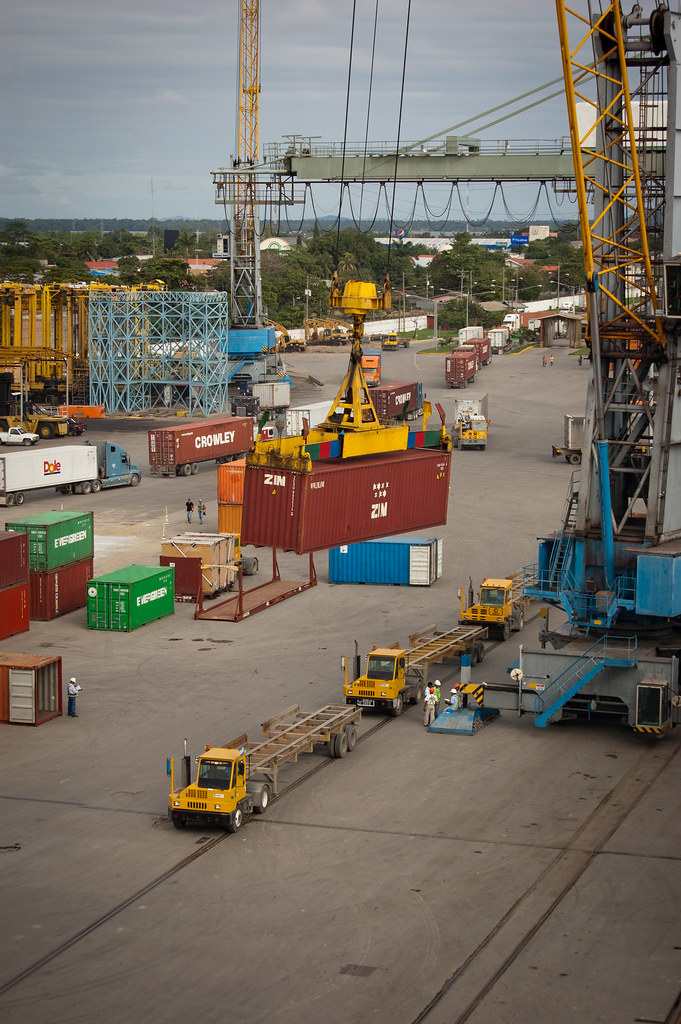
Above: The port of Puerto Cortés
Because it was vulnerable to pirates until the building of the Spanish fort at Omoa in the 18th century, Puerto Cortés had few permanent residents in the 16th and 17th centuries. People preferred to come out to the coast from San Pedro when a ship came into port.
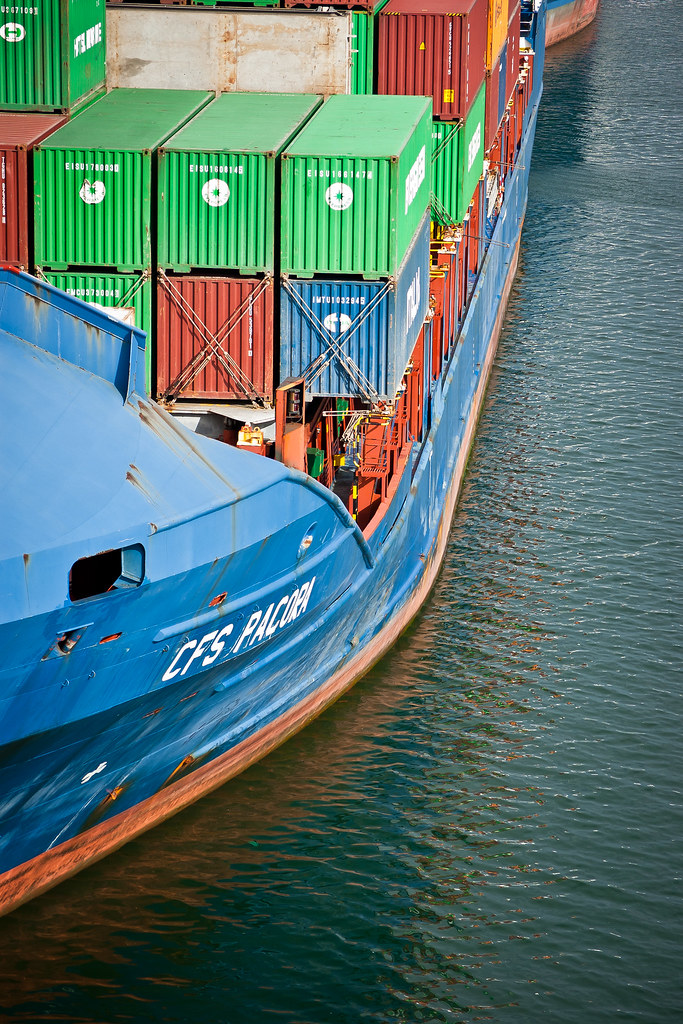
Above: A ship docked in Puerto Cortés
The original name Puerto de Caballos (‘Port of Horses’) came about because when Hernán Cortés arrived on Honduras' coast in 1524 from Mexico and started unloading horses and cargo from the ships, several horses were drowned. In 1869 Puerto Caballos changed its name to Puerto Cortés in honour of Hernán Cortés.
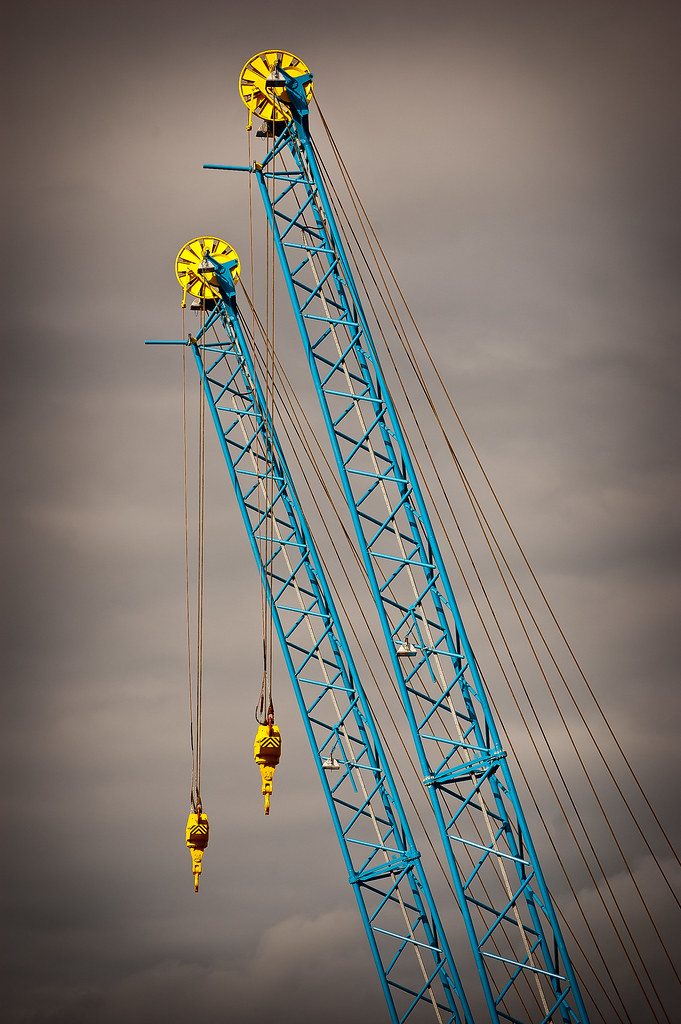
Above: Cranes in Puerto Cortés
The second new destination we visited was the port of Santo Tomás de Castilla in Guatemala. It lies at Amatique Bay off the Gulf of Honduras and was settled originally by Belgians in the 19th century.

Above: A panoramic view of Santo Tomás de Castilla port (click for bigger picture)
The seaport of the city was built in 1976, after an earthquake had severely damaged the port of Puerto Barrios. Today it is among the busiest in Central America and expanding; the port currently employs 2,100 workers and in 2004, 4.56 million tons of trading goods went through the port from 1,372 ships.

Above: Cargo containers at the port
In 2004, Santo Tomás de Castilla started receiving cruise ships. The cruise ship terminal was a tremendous boost for the Guatemalan tourism industry with four cruise ships a month making stops here. Cruise ship passengers visit Guatemala mostly for its Maya culture, spread throughout the country. Nearby attractions include Rio Dulce, Lake Izabal, the towns of Puerto Barrios, Livingston and San Felipe Castle, and the Mayan ruins of Quirigua.
I decided to visit the local town (not a tourist attraction!) which gave a real insight into the normal lives of Guatemala’s population.

Above: The main street through the town
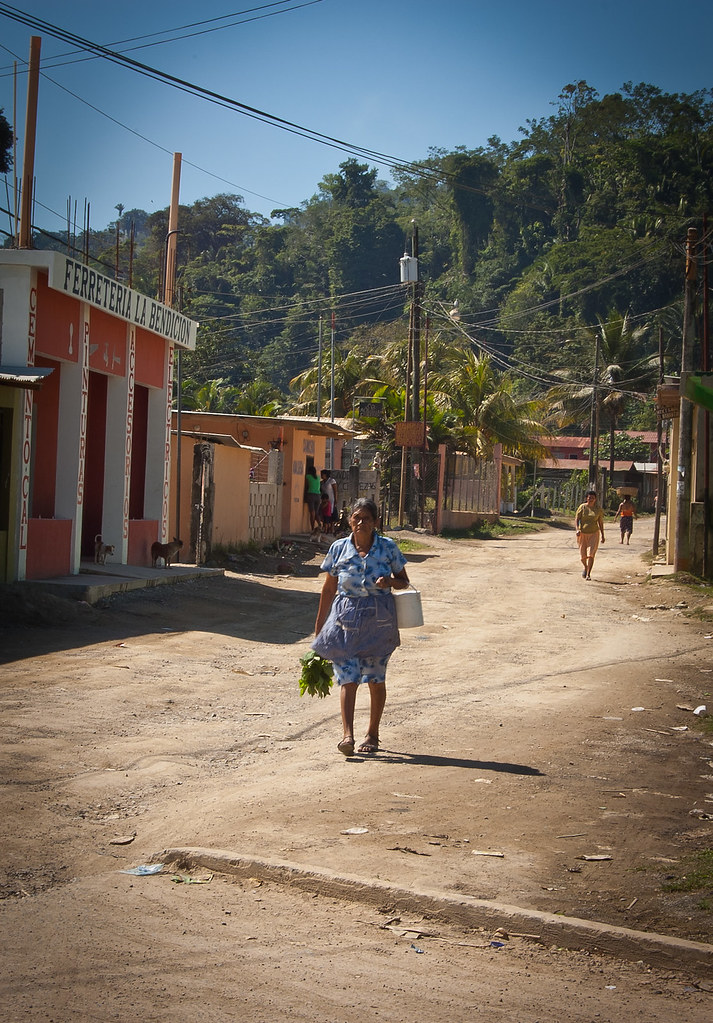
Above: A local resident
The town was very poor but everybody was friendly. There was a market taking place, selling all manner of goods including toys, fireworks and fruit!
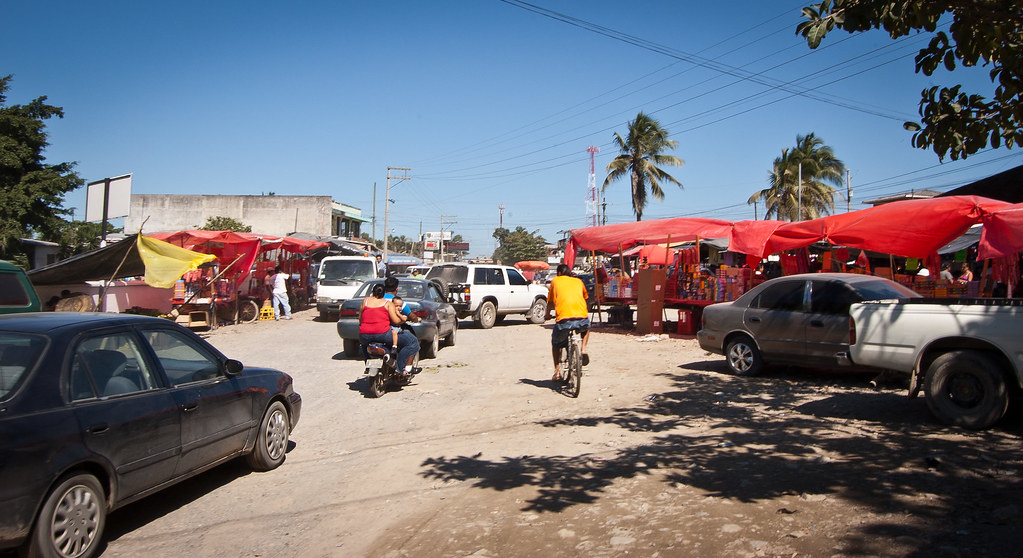
Above: A busy street with the market on both sides
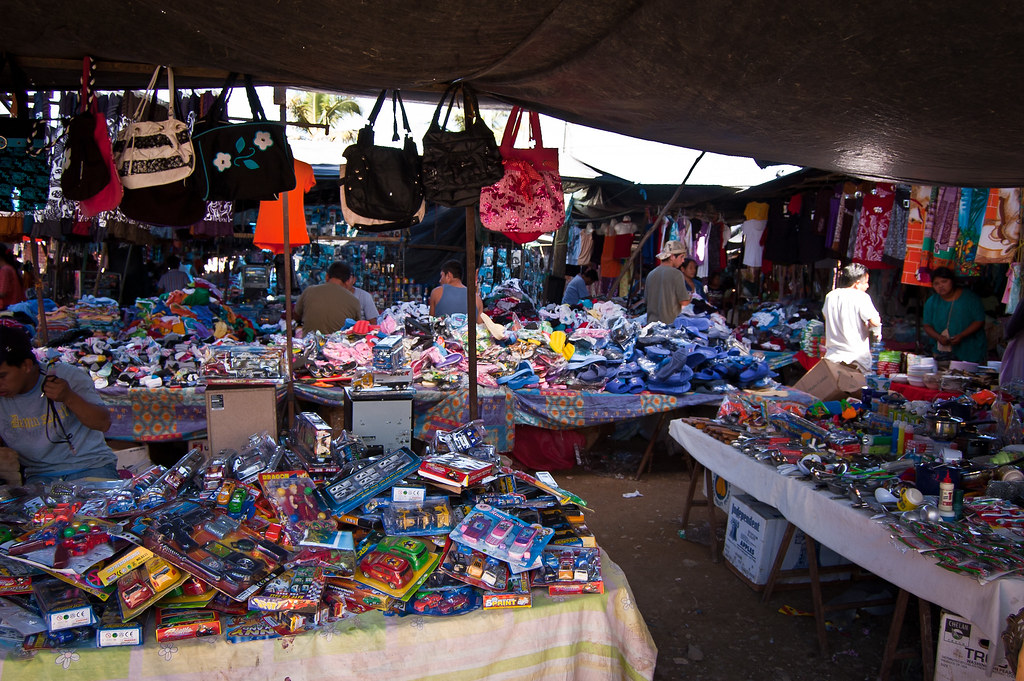
Above: Toys being sold at the market

Above: Fruit ready to sell in the market
After exploring the town, a group of us decided to visit a local waterfall which involved a very bumpy taxi ride! The Cerro San Gil springs reserve is a place where the rainforest is protected and preserved with care and enthusiasm. After paying an entry fee a local guide showed us around.
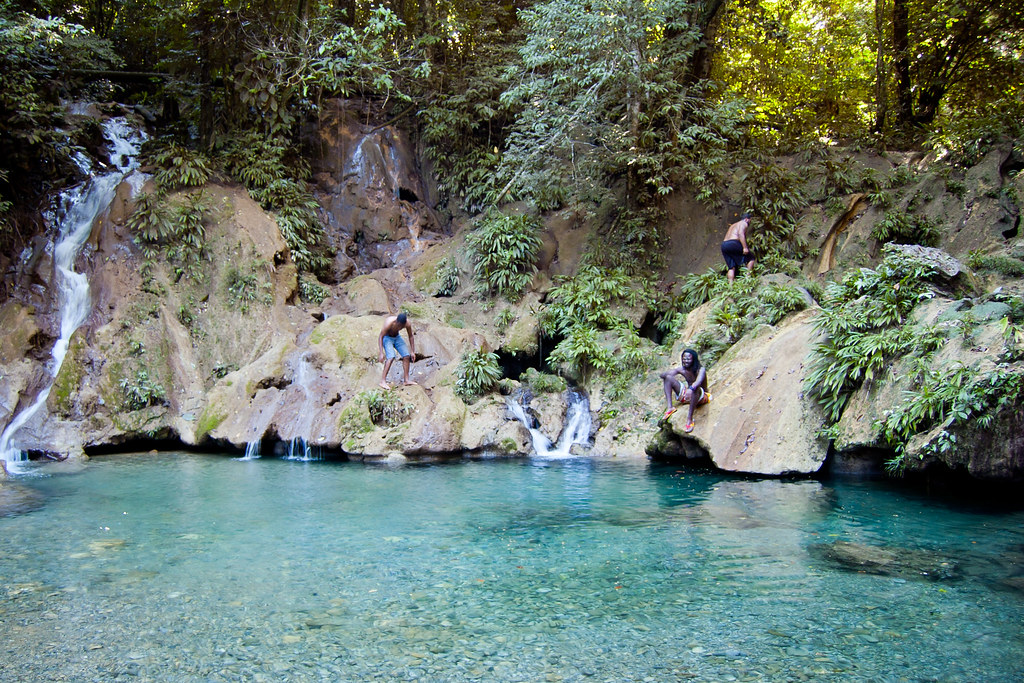
Above: People climbing the waterfall
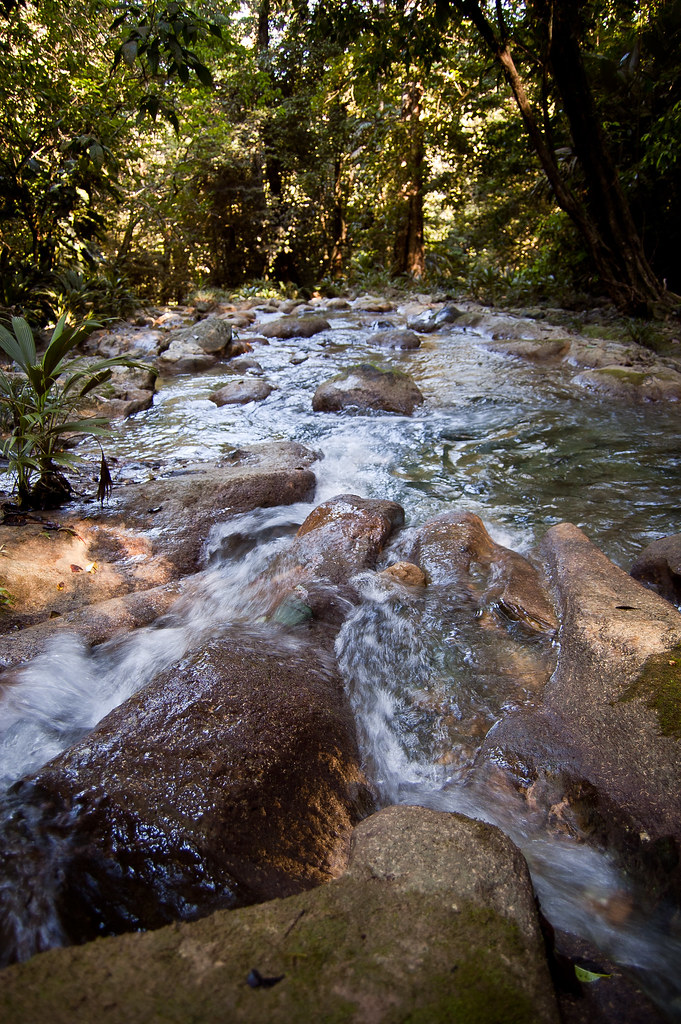
Above: The view in the opposite direction
Whilst at Cerro San Gil, we saw a bat cave (there are 45 species of bat here), banana trees, lizards and butterflies (Guatemala has over 1000 species of butterfly where Europe only has 321 species).
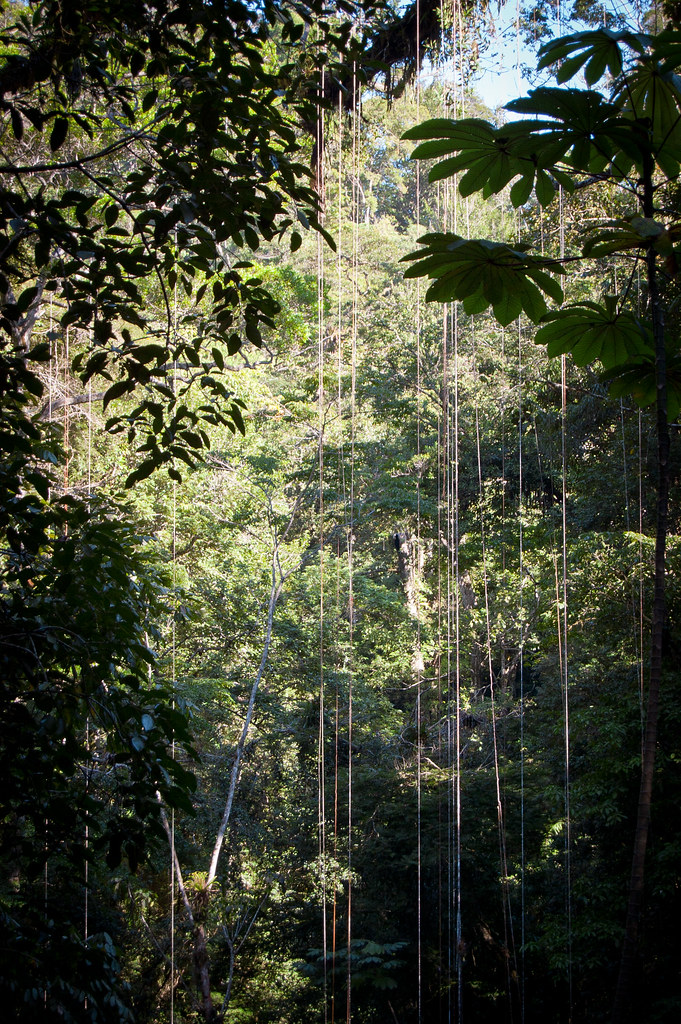
Above: Vines!
The trees in this rainforest have tall and straight trunks to try and reach sunlight. Their roots do not penetrate far into the ground, spread on the surface of the earth to absorb the nutrients in the leaves and rotting branches on the forest floor.
I’ll leave you with a rare shot of me (!) at Cerro San Gil. I hope you enjoyed this post about Puerto Cortés, Honduras and Santo Tomás de Castilla, Guatemala. Speak soon!
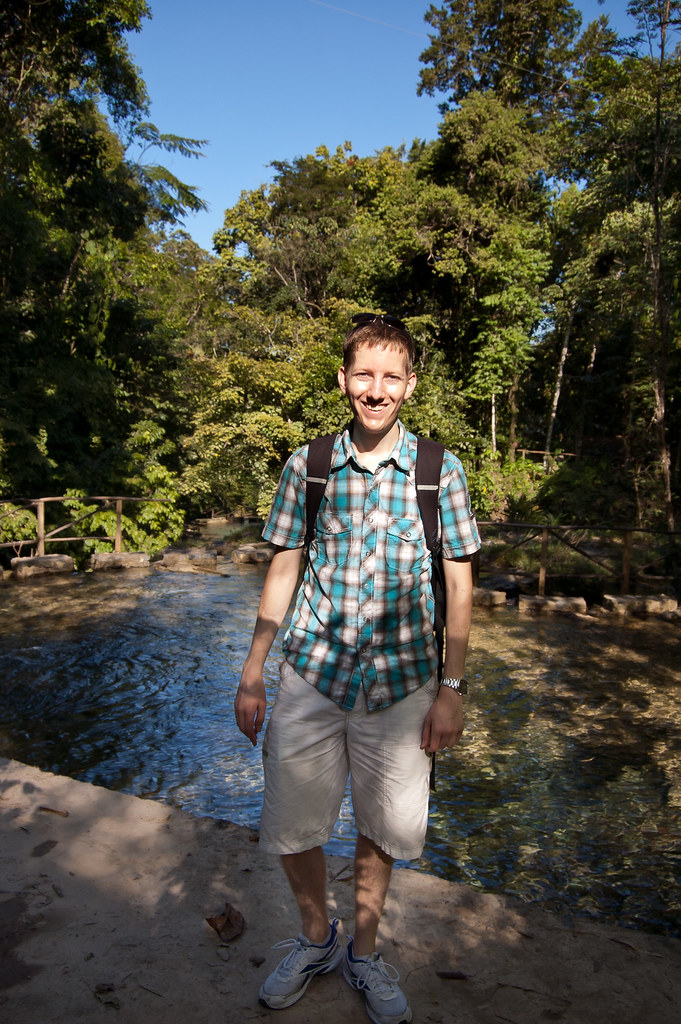

No comments:
Post a Comment